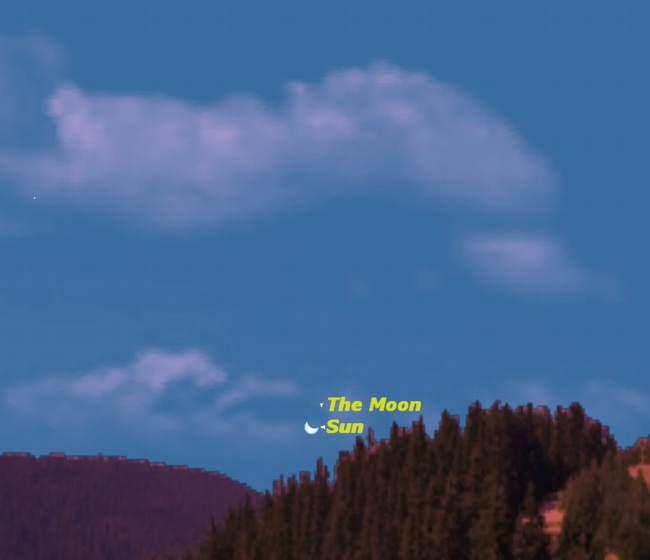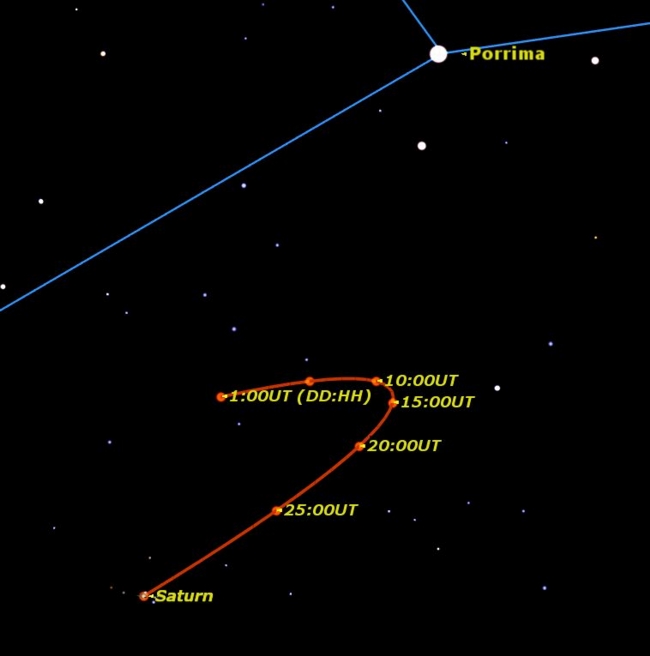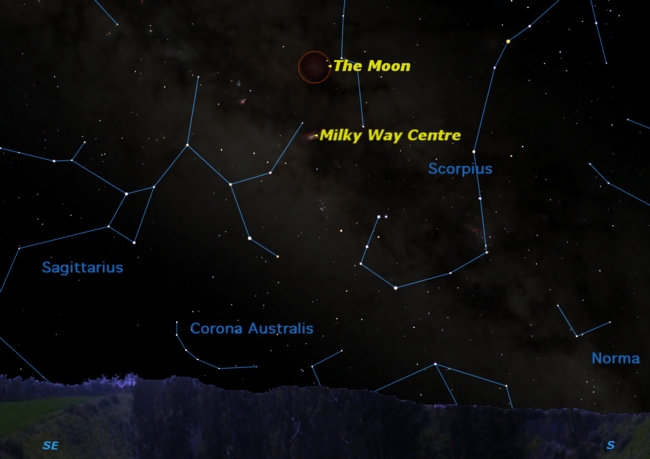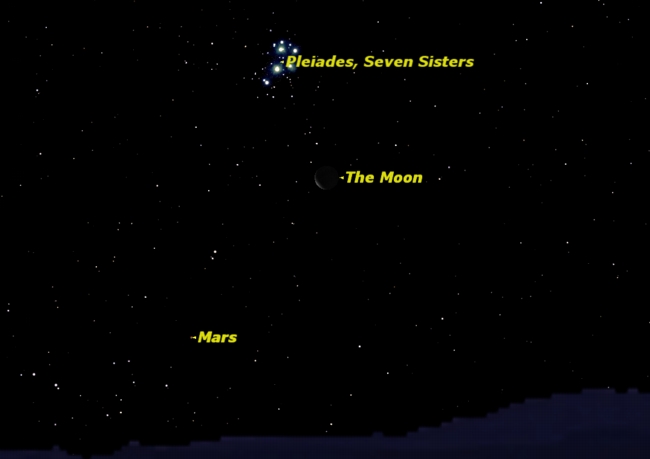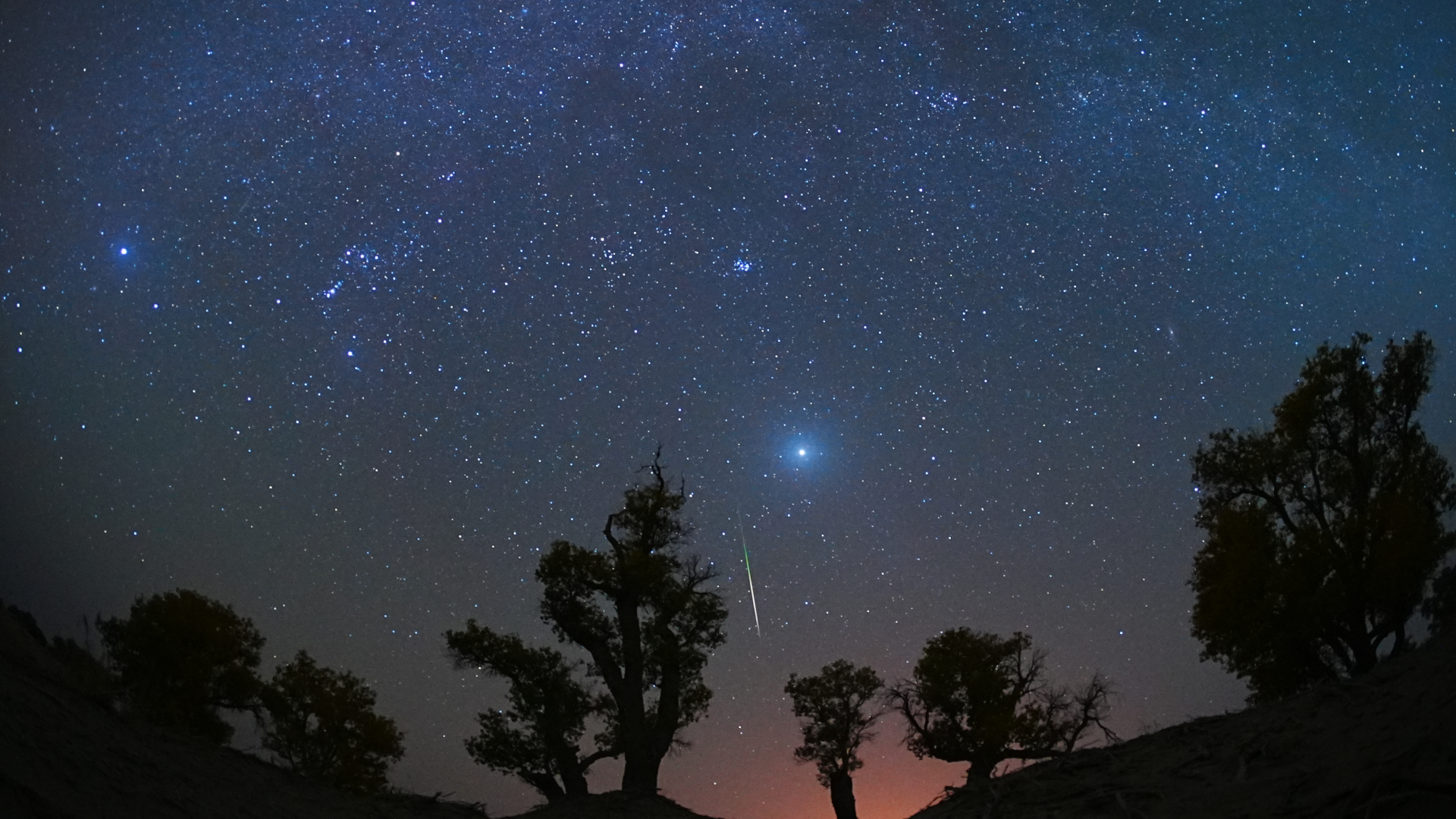Skywatching Events for June 2011
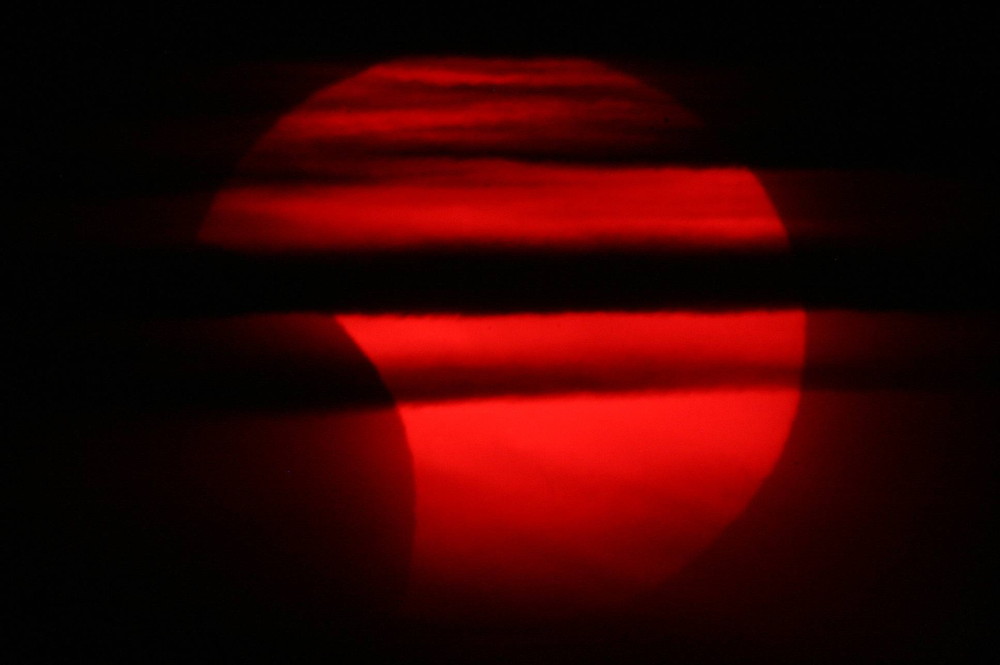
Here's a look at the most promising skywatching events if June 2011:
Moon Phases
Wed., June 1
New Moon, 5:03 p.m. EDT
The Moon is not visible on the date of New Moon because it is too close to the Sun, but can be seen low in the east as a narrow crescent a morning or two before, just before sunrise. It is visible low in the west an evening or two after New Moon.
Wed., June 8
First Quarter Moon, 10:11 p.m. EDT
Breaking space news, the latest updates on rocket launches, skywatching events and more!
The First Quarter Moon rises around 1 p.m., and sets around 1 a.m.
Wed., June 15
Full Moon, 4:14 p.m. EDT
The Full Moon of June is usually known as the Flower Moon. In Algonquian it is called Strawberry Moon. Other names are Honey Moon, Rose Moon, Hot Moon, and Planting Moon. In Hindi it is known as Wat Poornima. Its Sinhala (Buddhist) name is Poson Poya. The Full Moon rises around sunset and sets around sunrise, the only night in the month when the Moon is in the sky all night long. The rest of the month, the Moon spends at least some time in the daytime sky.
Thu., June 23
Last Quarter Moon, 7:48 a.m. EDT
The Last or Third Quarter Moon rises around 12:30 a.m. and sets around 1:30 p.m. It is most easily seen just after sunrise in the southern sky.
Observing Highlights
Wed., June 1, various times
Partial Solar Eclipse
Visible mainly in northeastern Asia (June 2) and the high Arctic in North America plus the Canadian maritime provinces (June 1). Also visible in the middle of the “night” (midnight Sun) in the high Arctic of Scandinavia and Russia. [Photos: "Midnight" Partial Solar Eclipse of 2011]
Wed., June 8, evening
Saturn close to Porrima
Saturn will by only 15 arc minutes away from the bright double star Porrima (Gamma Virginis). The two nearly equal components of this star are only 1.8 arc seconds apart, and are a test for a 4-inch (100-mm) telescope.
Wed., June 15
Total Lunar Eclipse
Best seen in Africa, the Middle East, and southern Asia. Partially visible at moonrise (early evening) in South America and Europe and at moonset (early morning) in eastern Asia and Australia. [Photos: The Long Total Lunar Eclipse of June 2011]
Tue. June 28, 4 a.m. local time
Moon, Mars, and the Pleiades
The narrow crescent Moon, the planet Mars, and the Pleiades star cluster will form an attractive group in the pre-dawn sky this morning.
Planets
Mercury is on the far side of the Sun and not visible this month.
Venus, though still bright, is sinking behind the Sun in the east just before dawn and becoming hard to see.
Mars is a “morning star” this month.
Jupiter is much higher and more noticeable than Venus in the pre-dawn sky.
Saturn spends most of the month close to the double star Porrima (Gamma Virginis), prominent in the evening sky. Its rings have returned to their usual glory after being on edge for the last two years.
Uranus is in Pisces all month, visible just before dawn.
Neptune is a morning object in Aquarius, visible in binoculars or a small telescope.
This article was provided to SPACE.com by Starry Night Education, the leader in space science curriculum solutions. Follow Starry Night on Twitter @StarryNightEdu.
Join our Space Forums to keep talking space on the latest missions, night sky and more! And if you have a news tip, correction or comment, let us know at: community@space.com.

Geoff Gaherty was Space.com's Night Sky columnist and in partnership with Starry Night software and a dedicated amateur astronomer who sought to share the wonders of the night sky with the world. Based in Canada, Geoff studied mathematics and physics at McGill University and earned a Ph.D. in anthropology from the University of Toronto, all while pursuing a passion for the night sky and serving as an astronomy communicator. He credited a partial solar eclipse observed in 1946 (at age 5) and his 1957 sighting of the Comet Arend-Roland as a teenager for sparking his interest in amateur astronomy. In 2008, Geoff won the Chant Medal from the Royal Astronomical Society of Canada, an award given to a Canadian amateur astronomer in recognition of their lifetime achievements. Sadly, Geoff passed away July 7, 2016 due to complications from a kidney transplant, but his legacy continues at Starry Night.
